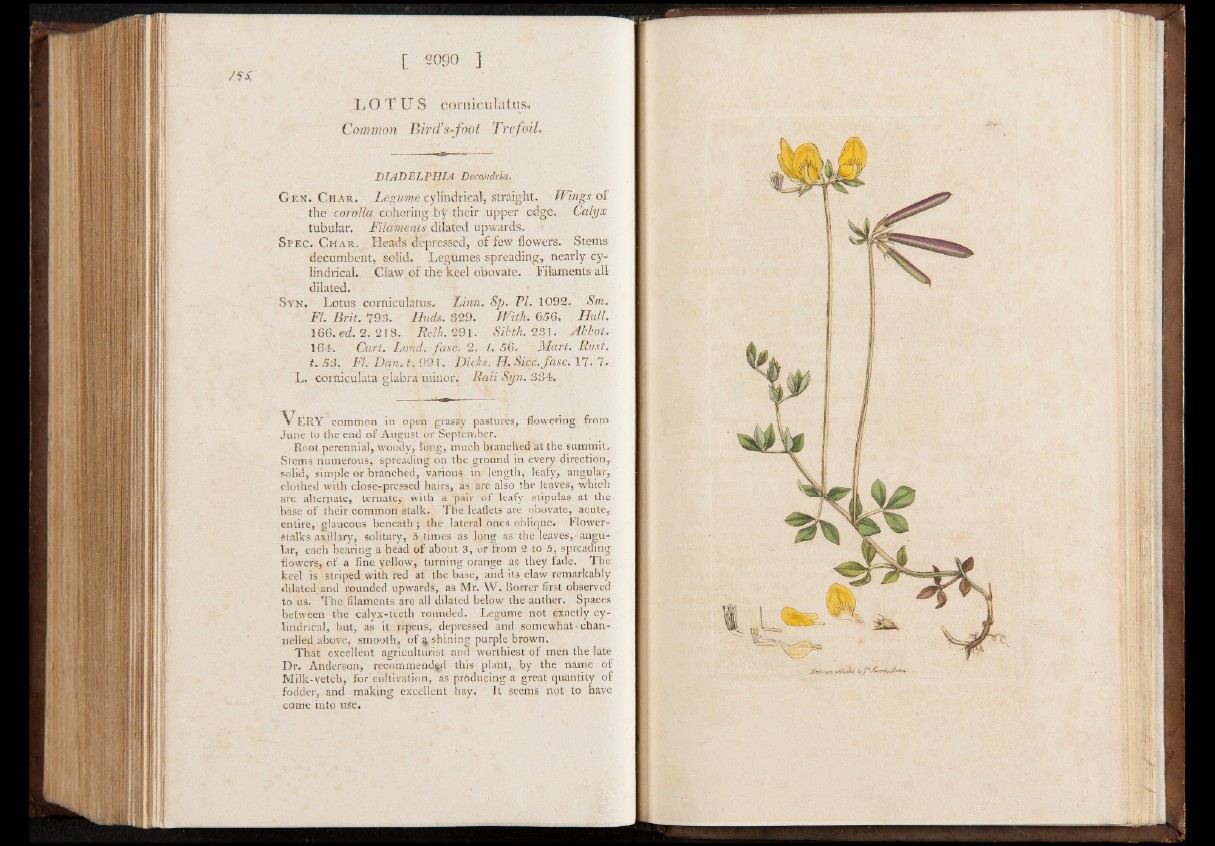
/• f i:
[ 2ogo ]
L O T U S co rn icu la tu s .
Common Bird’s-foót Trefoil.
DIADELPHIA Decandria.
G e n . C h a r . Legume c y lin d ric a l, stra ig h t. Wings o f
th e corolla c o h e rin g by th e ir u p p e r ed g e . Calyx
tu b u la r . Filaments d ila te d u pw a rd s.
S p e c . C h a r . Heads depressed, of few flowers. Stems
decumbent, solid. Legumes spreading, nearly cylindrical.
Claw, of the keel obovate. Filaments all
dilated.
Syn. Lotus corniculatus. Linn. Sp. PL 1092. Sm.
FI. Brit. 793. Ends. 329. With 656. Hull.
166. e d . 2 . 2 1 8. Relh. 291. Sibth. 231. Abbot.
164. Curt. Lond. fuse. 2 . t. 56. Mart. Rust,
t. 53. FI. Dan. t. 991. Dicks. H. Sicc.fasc. 17. 7.
L. corniculata glabra minor. Raii Syn. 334.
ERY common in open grassy pastures, flowering from
June to the end of August or September.
Root perennial, woody, long, much branched at the summit.
Stems numerous, spreading on the ground in every direction,,
solid, simple or branched, various in length, leafy, angular,
clothed with close-pressed hairs, as are also the leaves, which
are alternate, ternate, with a pair of leafy stipulas at the
base of their common stalk. The leaflets are obovate, acute,
entire, glaucous beneath ; the lateral ones oblique. Flower-
stalks axillary, solitary, 5 times as long as the leaves,-angular,
each bearing a head of about 3, or from 2 to 5, spreading
flowers, of a fine yellow, turning orange as they fade. The
keel is striped with red at the base, and its claw remarkably
dilated and rounded upwards, as Mr. W. Borrer first observed
tous. The filaments are all dilated below the anther. Spaces
between the calyx-teeth rounded. Legume not exactly cylindrical,
but, as it ripens, depressed and somewhat-channelled
above, smooth, of ^ shining purple brown.
That excellent agriculturist and worthiest of men the late
Dr. Anderson, recommended this plant, by the name of
Milk-vetch, for'cultivation, as producing a great quantity of
fodder, and making excellent hay. It seems riot to have
come into use.